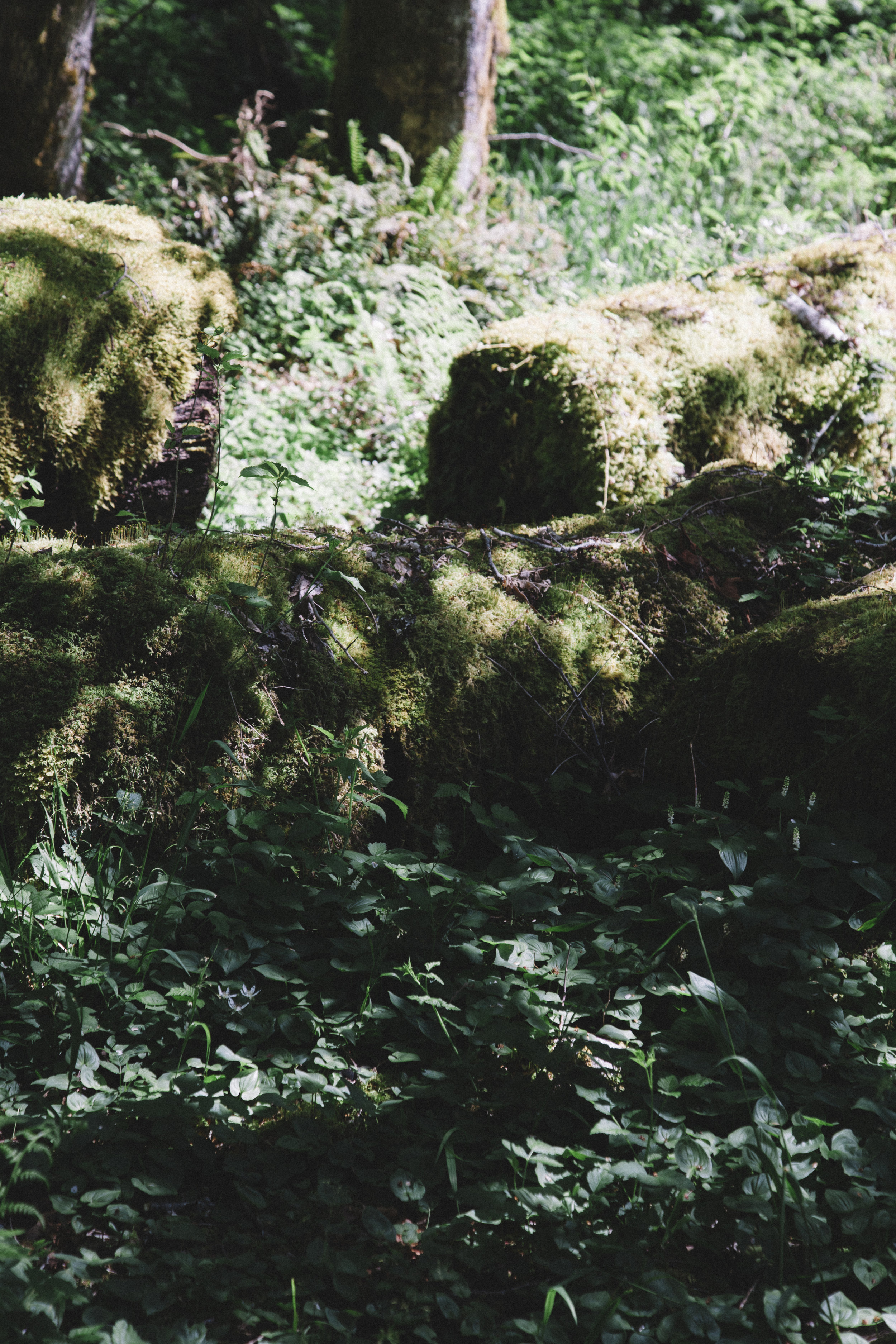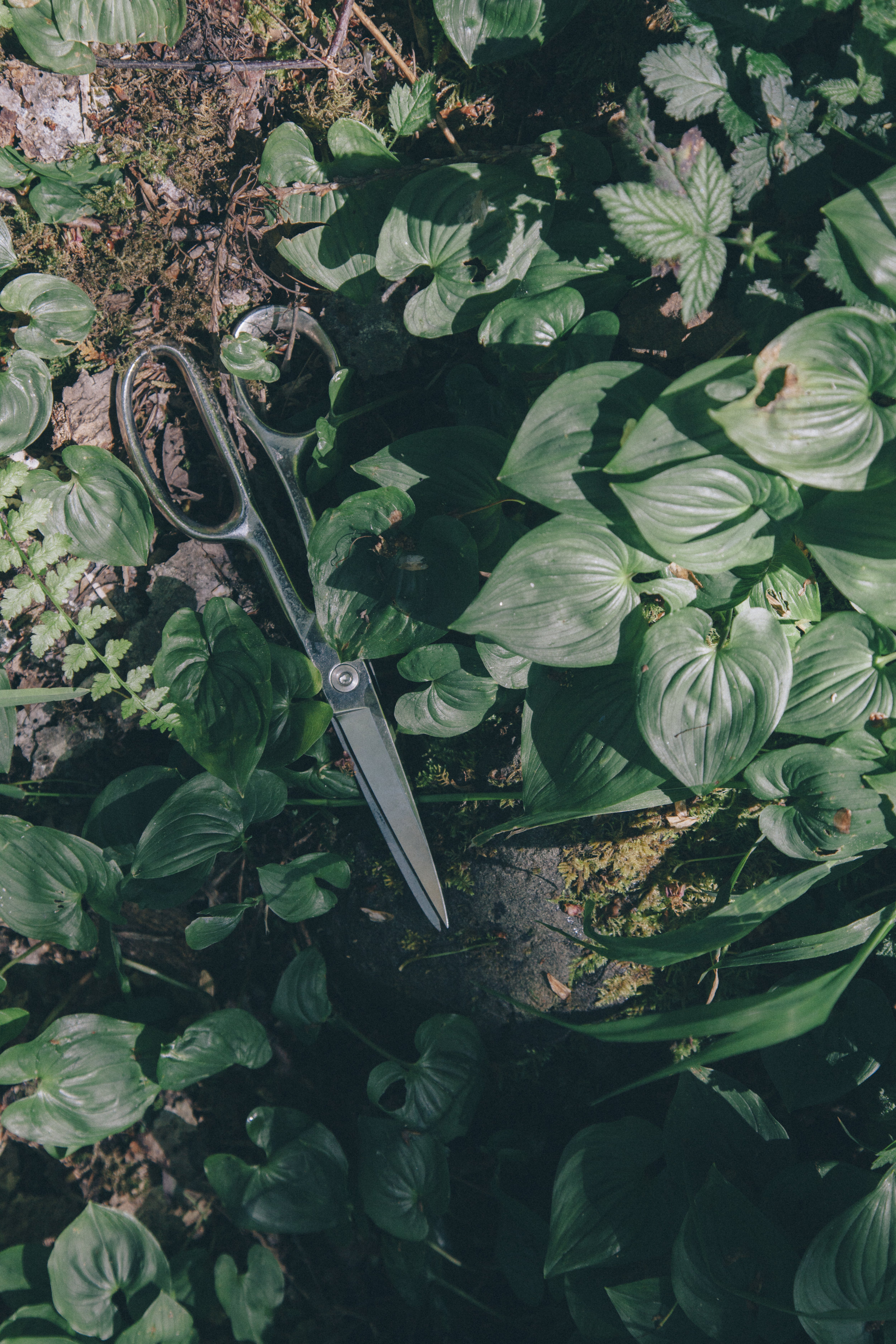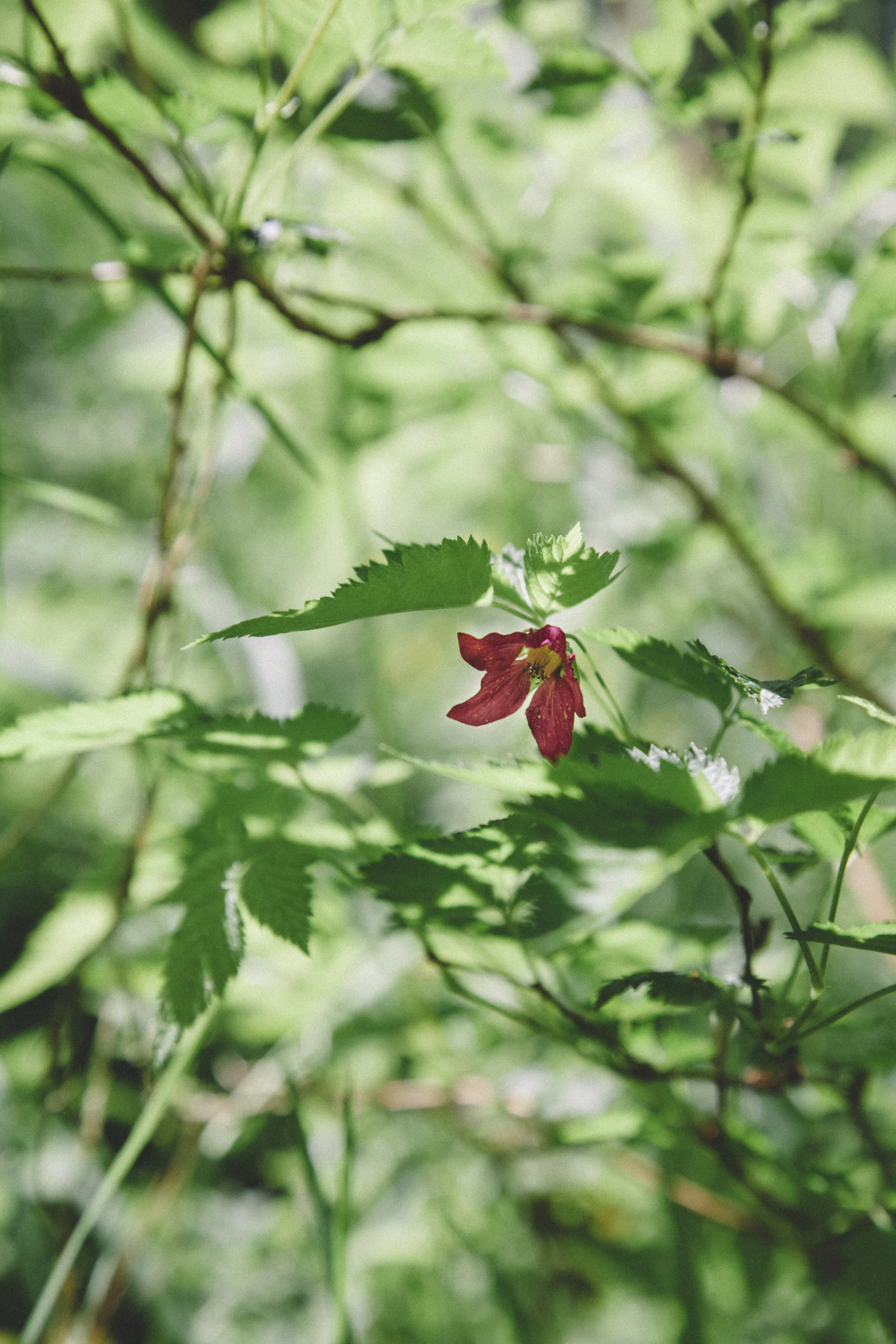Wild Alaskan Copper River Salmon basted in Whole-Grain Mustard and our own Big Leaf Maple Syrup over a salad of foraged things (details below), & pea tendrils from the garden.
Today started with a bike ride through berry thickets so thick it felt a little like a car wash at points. The sun was shining, the greens were lush and the first, hard little green berries were poking their heads out of just-fallen blossoms. Sitting here, a few hours later, the rain is falling in a thick blanket, quieting the forest. It's the end of Spring, and summer is just around the corner. Time to relish these last few weeks before a new season unfolds, including gathering the last tender spring greens for a fine, foraged meal.
A while back I became familiar with Drifter's Fish, the husband and wife team (Nelly & Michael), that make up the small Salmon fishing operation based out of Cordova, Alaska. There was something about their brand that, before I even got my hands on some, I knew it would be pure and delicious. Nelly, having been raised in a fishing family, went to college in Seattle where she studied Art History. After earning her degree, she realized the boat was where she always wanted to be, so she went back, and continues to use her art and design skills in their beautiful branding. The same can be said for Michael, and I love that these two decided to turn off the outlined path and choose to spend their time doing what they truly love, something that is all too often dangerously forgotten in our world. I also like that they are a husband and wife team, who, in the off season, road trip in their van.
Walking the trails of our property.
On their instagram, Nelly posts whispy images out at sea, drifting into the fog, and impressive silver-skinned catches moments out of the water. We have a shared love of places like Alaska and the Pacific Northwest, and an aching to be in them, and it's something I find reflected throughout the company. An avid forager, I've picked up some clever ideas from them (such as whizzing maple blossoms into a pesto)- something I'm always on the lookout for.
Collecting Salmon Berry Shoots & Flowers.
A few weeks ago, we met up for a bite to eat at Oddfellows Cafe. Shortly after, Nelly offered me some beautiful fish from their CSF (Community Supported Fishery) Program. Like a CSA (Community Supported Agriculture), the CSF is a subscription-based service delivering beautiful, Wild Alaskan Salmon to pick-up locations. It's a fantastic program, especially for those who, like me, can be just out of reach of fine seafood. Meant to connect you to your fisherman, this program creates a bond between our food, those who bring it us and the places it comes from. There is nothing like knowing to understand what a feat this is, and to realize the entirety of the chain of events.
A blackberry flower amoungst False Lily of The Valley.
Foraging scissors.
This recipe started with the salmon. Something familiar and ordinary- salmon with maple syrup- felt special with the PNW Big Leaf Maple Syrup we tapped ourselves from our Maple Trees. Mixed with whole-grain mustard and blended with Elderflower Syrup for a floral, spring note, along with verjus to cut the sweetness, this salmon gets bathed in a thick, sticky syrup that builds and glazes the flesh as it cooks. I love to serve fish over a bed of the wild watercress that grows in one of the creeks on our property, but I tend to think most often of whitefish. I decided to take a chance with the Salmon, and I'm glad I did. The peppery, crunchy green pairs nicely with the sweet, fatty fish. Along with a handful of tender Salmon Berry shoots and flowers, some buttery toasted marcona almonds and shaved parma, I couldn't help but throw in the pea tendrils I'd recently thinned from the garden. Foraged plants can have bold and unique flavors- peppery, tart and even astringent, so it can be a good idea to balance these flavors against something warm and familiar, like maple syrup.
You can re-create this recipe at home without foraging or tapping your own maples, of course, but should you choose to venture for wild watercress there are a few things to be cautious of. Growing in streams, watercress is a fascinating plant. One of the first plants to be adapted for domestication, it's also one of the most nutritious. Because it grows in water, you want to make sure to clean it extremely thoroughly and to only pick from fresh, running waterways with clean sources. You also want to be extremely careful of Poisonous Hemlock. Growing throughout watercress, this stuff is no joke. Like foxglove, it disrupts the central nervous system and can easily result in respiratory collapse and death. In the late summer, the watercress itself changes shape- the leaves begin to thin and lengthen and white flowers start to blossom at the tops- similar to the appearance of hemlock. Scary, I know, which is why I always bring a trusty book with me when foraging and, in any doubt, pass. You can break off hemlock and look at the inside of the stem structure to determine the plant if you are unsure. Hemlock will have a complicated geometric pattern whereas watercress will be hollow, but usually if I'm that uncertain I'll look for something else. It's also much easier to forage watercress in early spring when the plant bears little resemblance to hemlock and is tender and less peppery to boot.
Salmon Berry Flower.
Gathering at our river.
Copper River Salmon & Wild Watercress Salad
Ingredients:
2-3 Drifter’s Fish Salmon fillets (6-8 oz. each), thawed
4 tablespoons whole grain mustard (I love Maille brand)
3 tablespoons pure maple syrup
5 tablespoons Verjus
1 tablespoon Elderflower Syrup
Sea salt
Large bundle wild (or store-bought) watercress
Small handful Salmonberry blossoms & shoots
A generous handful of Marcona almonds (I like Matiz brand)
Wedge Parmesan Cheese
A couple tablespoons of cold-pressed olive oil, to finish
Fresh-cracked black pepper
Directions:
Move your oven rack to two notches from the top and turn the broiler to high. Set your thawed fillets out to come to room temperature (this helps the salmon to cook evenly throughout, so the warmer outside areas don't overcook while the cooler inside is still raw).
In a small bowl, whisk together the mustard, maple syrup, verjus and elderflower syrup. Pour into a small, heavy bottomed pan on the stovetop over medium-high heat. You’re going to want to reduce this mixture so it will be here for a good 12-15 minutes. It’ll bubble and become hot so keep an eye on it and keep it moving with a whisk to avoid burning.
Once the sauce has been reducing for about 10 minutes, place the salmon on a baking sheet lined with a silicone mat or foil, skin side down. Grab a pinch of salt between your fingers and, holding your hand a good 6 inches or more above the salmon, sprinkle across the surface in an even layer. Repeat with the remaining fillets.
Returning to your sauce bubbling on the stovetop, spoon ⅓ of the mixture evenly over the salmon and place in the heated oven. Return the pan to it's burner and set the timer for 2 minutes while you continue to stir the sauce.
When the timer goes off, quickly baste half of the remaining sauce over the fillets and return to the oven for another 2 minutes.
At this point, you can take a quick break to thoroughly wash the watercress, snapping off any stems that seem large and leafless. Use very cold water and place back in the fridge. I don’t generally wash the salmon berry flowers, as the petals will fall off and I forage mine from my own property but use your best judgement here.
When the timer goes off, take your sauce mixture (which should be even thicker now), and spoon the remainder onto the salmon. The salmon should now be cooked. You want it to be just a touch raw looking on the inner-most part, as the residual heat will continue to cook the salmon after it's out of the oven, finishing it off nicely without overcooking. If it looks more than a touch raw, return for another 1-2 minutes. Set aside.
Place a small, dry skillet over a burner on low and toss in the marcona almonds. Lightly toast for just a couple of minutes, shaking the pan a couple times to toast all sides, and remove.
Arrange the cold watercress over a platter or cutting board and sprinkle with the salmon berry shoots & flowers. Sprinkle the almonds over top, and use a vegetable peeler to shave pieces of parmesan over the almonds - I like to do about a handful. Drizzle with a few tablespoons of the olive oil. Sprinkle another hefty pinch of salt over top, along with a few good grinds of pepper. Carefully slide the salmon off of the mat or foil and onto the watercress platter. Serve with chilled iced tea or white wine on your porch/yard/picnic blanket.







